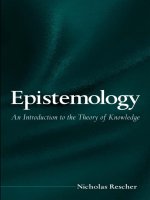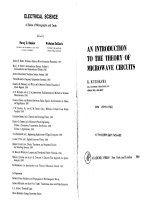Introduction to the theory of matroids (lecture notes in economics and mathematical systems)
Bạn đang xem bản rút gọn của tài liệu. Xem và tải ngay bản đầy đủ của tài liệu tại đây (2.79 MB, 113 trang )
Lecture Notes in Economics and Mathematical Systems
(Vol. 1-15: Lecture Notes in Operations Research and Mathematical Economics, Vol. 16-59: Lecture
Notes in Operations Research and Mathematical Systems)
Vol. 1: H. BOhlmann. H. Loeffel, E. Nievergelt, EinfOhrung in die
Theorie und Praxis der Entscheidung bei Unsicherheit. 2. Auflage,
IV, 125 Seiten. 1969. DM 16,Vol. 2: U. N. Bha~ A Study of the Queueing Systems M/G/I and
GI/MI. VII~ 78 pages. 1968. DM 16.Vol. 3: A. Strauss. An Introduction to Optimal Control Theory. VI,
153 pages. 1968. DM 16,Vol. 4: Branch and Bound: Eine EinfOhrung. 2., geAnderte Auflage.
Herausgegeben von F. Weinberg. VII, 174 Seiten. 1972. DM 18,Vol. 5: HyvArinen, Information Theory for Systems Engineers. VIII,
205 pages. 1968. DM 16,Vol. 6: H. P. KOnzi, O. MOiler, E. Nievergel~ EinfOhrungskursus in
die dynamische Programmierung.IV, 103 Seiten. 1968. DM 16,-
Vol. 30: H. Noltemeier. Sensitlvitlllsanalyse bei diskreten lonearen
Optimierungsproblemen. VI. 102 Seiten. 1970. DM 16.Vol. 31: M. KOhlmeyer. Die nichtzentrale t-Verteilung. II, 106 Seiten. 1970. DM 16.Vol. 32: F. Bartholomes und G. Hotz, Homomorphismen und Reduktionen linearer Sprachen. XII, 143 Seiten. 1970. DM 16,Vol. 33: K. Hinderer, Foundations of Non-stationary DynamIC Programming with Discrete Time Parameter. VI, 160 pages. 1970.
DM 16,Vol. 34: H. StOrmer, Semi-Markoff-Prozesse mit endlich vielen
Zustanden. Theone und Anwendungen. VII, 128 Seiten. 1970.
DM 16,Vol. 35: F. Ferschl, Markovkellen. VI, 168 Seiten. 1970. DM 16,-
Vol. 7: W. Popp, EinfOhnung in die Theorie der Lagerhaltung. VI,
173 Seiten. 1968. DM 16,-
Vol. 36: M. P. J. Magill, On a General Economic Theory of Motion.
VI, 95 pages. 1970. DM 16,-
Vol. 8: J. Teghem, J. Loris-Teghem, J. P. Lambolle, Modeles
d'Allente M/G/I et GI/MI1 a Arrivees et Services en Groupes. IV,
53 pages. 1969. DM 16,-
Vol. 37: H. MOlier-Merbach, On Round-Off Errors in Linear Programming. VI, 48 pages. 1970. DM 16,-
Vol. 9: E. Schultze, EinfOhrung in die mathematischen Grundlagen
der Informationstheorie. VI, 116 Seiten. 1969. DM 16,Vol. 10: D. Hochsllidter, Stochastische Lagerhaltungsmodelle. VI,
269 Seiten. 1969. DM 18,Vol. 11/12: Mathematical Systems Theory and Economics. Edited
by H. W. Kuhn and G. P. SzegO. VIII, IV, 486 pages. 1969. DM 34,Vol. 13: Heuristische Planungsmethoden. Herausgegeben von
F. Weinberg und C. A. Zehnder. II, 93 Seiten. 1969. DM 16,Vol. 14: Computing Methods in Optimization Problems. Edited
by A. V. Balakrishnan. V, 191 pages. 1969. DM 16,-
Vol. 38: Statistische Methoden I. Herausgegeben von E. Walter.
VIII, 338 Seiten. 1970. DM 22,Vol. 39: ~atistische Methoden II. Herausgegeben von E. Walter.
IV, 155 Seiten. 1970. DM 16,Vol. 40: H. Drygas, The Coordinate-Free Approach to GaussMarkov Estimation. VIII, 113 pages. 1970. DM 16,Vol. 41: U. Ueing, Zwei LOsungsmethoden fUr nichtkonvexe Programmierungsprobleme. VI, 92 Seiten. 1971. DM 16,Vol. 42: A. V. Balakrishnan, Introduction to Optimization Theory in
a Hilbert Space. IV, 153 pages. 1971. DM 16,Vol. 43: J. A. Morales, Bayesian Full Information Structural Analysis. VI, 154 pages. 1971. DM 16,-
Vol. 15: Economic Models, Estimation and Risk Programming:
Essays in Honor of Gerhard Tintner. Edited by K. A. Fox, G. V. L.
Narasimham and J. K. Sengupta. VIII, 461 pages. 1969. DM 24,-
Vol. 44: G. Feichtinger, Stochastische Modelle demographischer
Prozesse. XIII, 404 Seilen. 1971. DM 28,-
Vol. 16: H. P. KOnzi und W. Oellli, Nichtlineare Optimierung:
Neuere Verfahren, Bibliographie. IV, 180 Seiten. 1969. DM 16,-
Vol. 45: K. Wendler, Hauptaustauschschrille (Principal Pivoting).
11,64 Seiten. 1971. DM 16,-
Vol. 17: H. Bauer und K. Neumann, Berechnung optimaler Steuerungen, Maximumprinzip und dynamische Optimierung. VIII, 188
Seiten. 1969. DM 16,-
Vol. 46: C. Boucher, LeQons sur la theorie des automates mathematiques. VIII, 193 pages. 1971. DM 18,-
Vol. 18: M. Wolff, Optimale Instandhaltungspolitiken in einfachen
Systemen. V, 143 Seiten. 1970. DM 16,Vol. 19: L. Hyvarinen Mathematical Modeling for Industrial Processes. VI, 122 pages. 1970. DM 16,Vol. 20: G. Uebe, Optimale FahrplAne. IX, 161 Seiten. 1970.
DM16,Vol. 21: Th. Liebling, Graphentheorie in Planungs- und Tourenproblemen am Beispiel des stAdtischen StraBendienstes. IX,
118 Seiten. 1970. DM 16,Vol. 22: W. Eichhorn, Theorie der homogenen Produktionsfunktion. VIII, 119 Seiten. 1970. DM 16,Vol. 23: A. Ghosal, Some Aspects of Queueing and Storage
Systems. IV, 93 pages. 1970. DM 16,Vol. 24: Feichtinger Lernprozesse in stochastischen Automaten.
V, 66 Seiten. 1970. DM 16,Vol. 25: R. Henn und O. Opitz, Konsum- und Produktionstheorie.
I. II, 124 Seiten. 1970. DM 16,Vol. 26: D. Hochsllidter und G. Uebe, Okonometrische Methoden.
XII, 250 Seiten. 1970. DM 18,Vol. 27: I. H. Mufti, Computational Methods in Optimal Control
Problems. IV, 45 pages. 1970. DM 16,Vol. 28: Theoretical Approaches to Non-Numerical Problem Solving. Edited by R. B. Banerji and M. D. Mesarovic. VI, 466 pages.
1970. DM 24,Vol. 29: S. E. Elmaghraby, Some Network Models in Management
Science. III, 177 pages. 1970. DM 16,-
Vol. 47: H. A Nour Eldin, Optimierung Ii nearer Regelsysteme
mit quadratischer Zielfunktion. VIII, 163 Seiten. 1971. DM 16,Vol. 48: M. Constam, FORTRAN fOr AnfAnger. 2. Auflage. VI,
148 Seiten. 1973. DM 16,Vol. 49: Ch. SchneeweiB, Regelungstechnische stochastische
Optimierungsverfahren. XI, 254 Seiten. 1971. DM 22,Vol. 50: Unternehmensforschung Heute - Obersichtsvortrage der
ZOricher Tagung von SVOR und DGU, September 1970. Herausgegeben von M. Beckmann. VI, 133 Seiten. 1971. DM 16,Vol. 51: Digitale Simulation. Herausgegeben von K. Bauknecht
und W. Nef. IV, 207 Seiten. 1971. DM 18,Vol. 52: Invariant Imbedding. Proceedings of the Summer Workshop on Invariant Imbedding Held at the University of Southern
California, June-August 1970. Edited by R. E. Bellman and E. D.
Denman. IV, 148 pages. 1971. DM 16,Vol. 53: J. RosenmOller, Kooperative Spiele und MArkte. IV, 152
Seiten. 1971. OM 16,Vol. 54: C. C. von WeizsAcker, Steady State Capital Theory. III,
102 pages. 1971. OM 16,Vol. 55: P. A. V. B. Swamy, Statistical Inference in Random Coefficient Regression Models. VIII, 209 pages. 1971. OM 20,Vol. 56: Mohamed A. EI-Hodiri, Constrained Extrema. Introduction
to the Differentiable Case with Economic Applications. III, 130
pages. 19?1. DM 16,Vol. 57: E. Freund, Zeitvanable MehrgroBensysteme. VII, 160 Seiten. 1971. OM 18,Vol. 58: P. B. Hagelschuer, Theorie der linearen Dekomposition.
VII, 191 Seiten.1971. OM 18,continuation on page 110
Lecture Notes
in Economics and
Mathematical Systems
Managing Editors: M. Beckmann and H. P. KOnzi
Mathematical Economics
109
Rabe von Randow
Introd uction
to the Theory of Matroids
Springer-Verlag
Berlin· Heidelberg· New York 1975
Editorial Board
H. Albach . A V. Balakrishnan . M. Beckmann (Managing Editor) . P. Dhrymes
J. Green· W. Hildenbrand· W. Krelle . H. P. Kunzi (Managing Editor) . K Ritter
R. Sato . H. Schelbert . P. Schonfeld
Managing Editors
Prof. Dr. M. Beckmann
Brown University
Providence, RI 02912/USA
Prof. Dr. H. P. Kunzi
Universitat Zurich
8090 Zurich/Schweiz
Author
Dr. Rabe von Randow
Institut fur Okonometrie
und Operations Research
Universitat Bonn
Abt. Operations Research
NassestraBe 2
53 Bonn 1
BRD
Library of Congress Cataloging in Publication Data
Randow, Rabe von.
Introduction to the theory of matroids.
(Mathematical economics) (Lecture notes in economics and mathematical systems ; 109)
Bibliography: p.
Incl.udes index.
1. Matroids. I. Title. II. Series. III. Series: Lecture notes in economics and mathematical
systems ; 109.
QAl66.6.R;56
512'.5
75-16;580
AMS Subject Classifications (1970): 05B35,90A99,90B10,90C05,
94A20
ISBN-13: 978-3-540-07177-8
001: 10.1007/978-3-642-48292-2
e-ISBN-13: 978-3-642-48292-2
This work is subject to copyright. All rights are reserved, whether the whole
or part of the material is concerned, specifically those of translation,
reprinting, re-use of illustrations, broadcasting, reproduction by photocopying machine or similar means, and storage in data banks.
Under § 54 of the German Copyright Law where copies are made for other
than private use, a fee is payable to the publisher, the amount of the fee to
be determined by agreement with the publisher.
© by Springer-Verlag Berlin' Heidelberg 1975
Offsetdruck: Julius Beltz, Hemsbach/Bergstr.
Preface
Matroid theory has its origin in a paper by H. Whitney
entitled "On the abstract properties of linear dependence" [35],
which appeared in 1935. The main objective of the paper was to
establish the essential (abstract) properties of the concepts of
linear dependence and independence in vector spaces, and to use
these for the axiomatic definition of a new algebraic object,
namely the matroid. Furthermore, Whitney showed that these axioms
are also abstractions of certain graph-theoretic concepts. This
is very much in evidence when one considers the basic concepts
making up the structure of a matroid: some reflect their linearalgebraic origin, while others reflect their graph-theoretic
origin. Whitney also studied a number of important examples of
matroids.
The next major development was brought about in the forties
by R. Rado's matroid generalisation of P. Hall's famous "marriage"
theorem. This provided new impulses for transversal theory, in
which matroids today play an essential role under the name of
"independence structures", cf. the treatise on transversal theory
by L. Mirsky [26J. At roughly the same time R.P. Dilworth established the connection between matroids and lattice theory. Thus
matroids became an essential part of combinatorial mathematics.
About ten years later W.T. Tutte [30] developed the fundamentals of matroids in detail from a graph-theoretic point of view,
and characterised graphic matroids as well as the larger class of
those matroids that are representable over any field.
More recently papers by Bondy, Brualdi, Crapo, Edmonds,
Fulkerson, Ingleton, Lehman, Mason, Maurer, Minty, NaSh-Williams,
Piff, Rado, Rota, de Sousa, Tutte, Welsh, Woodall, and other
combinatorialists have led to a widespread interest in matroids
and to a rapid growth in the volume of literature on matroids.
As was mentioned above, matroids are defined axiomatically.
However, their rich structure allows one to pick one of a number
of axiomatic definitions, depending on which of the matroid properties is to play the dominant role (cf. the survey papers by
Harary and Welsh [15J and Wilson [36J). Thus in practice each
author uses the definition most suitable for his purposes.
Whitney considered the equivalence of several of these different
definitions in his fundamental paper, and the recent book by
B.B. Crapo and G.-C. Rota [7] does so as well but treats the
subject within a lattice-theoretic framework. Apart from these
no general introduction to the theory of matroids, giving their
various equivalent axiomatic definitions and the most important
examples, is readily available.
The present monograph is an attempt to fill this gap. Its
main objective is to provide an introduction to matroids and all
the usual basic concepts associated with them without favouring
any particular point of view, and to prove the equivalence of
all the usual axiomatic definitions of matroids. Furthermore, we
have collected together and proved all the commonly used properties of matroids involving the concepts introduced. Where proofs
were taken from the literature, the source has been indicated in
the usual way. Next we have discussed the common types of matroids
~
matrix-matroids, binary, graphic, cographic, uniform, matching
and transversal matroids - in some detail, mentioning others such
as orientable matroids and gammoids, as well as important characterisations of the above, in remarks. Much of the material on the
examples can be read after the initial definition of a matroid.
Two further chapters deal respectively with the greedy algorithm
and its relation to matroids, and with the recent interesting
results on exchange properties of matroid bases.
A number of omissions will however be immediately obvious. We
have for example not developed the geometry of matroids involving
minors and separators. For a treatment of this topic we refer the
reader to the paper [30] and book [31] by Tutte and to the book by
Crapo and Rota [7]. Furthermore, no mention is made of the recent
work by Maurer [24] and Holzmann, Norton and Tobey [16] on the
basis-graphic representation of matroids. These and other topics
not considered here go beyond the scope of this monograph as a
first introduction to matroid theory.
One of the most beautiful aspects of the matroid concept is
its unifying nature - by specialisation it covers many apparently
unrelated structures and thus reveals their essential nature as
well as yielding clear and often easy proofs for results that are
v
otherwise very tedious to derive (cf. Remark (8) at the end of
Chapter III). Matroids have however also led to decisive advances
in theories important for practical applications, for example in
linear programming through the greedy algorithm (cf. the papers
by Edmonds [10], [11], and Dunstan and Welsh [9]), and in network
theory (cf. Minty [25]). Moreover, it is felt that matroids could
well become a new and powerful tool in the mathematical theory of
economics, and it is with this thought in mind that the present
monograph is addressed in particular to mathematical economists
and operations research specialists.
In conclusion, I wish to express my gratitude to Professor
B. Korte for introducing me to matroid theory and encouraging me
to write this monograph, and I extend my thanks to Professor
M. Beckmann for accepting it for publication in the Lecture
Notes Series.
University of Bonn
March 1975
R. von Randow
Contents
Basic Notation
Chapter Ie
Equivalent Axiomatic Definitions and
Elementary Properties of Matroids.
§1.1.
The first rank-axiomatic definition of
a matroid
§1.2.
The independence-axiomatic definition of
a matroid
§1.3.
The second rank-axiomatic definition of
a matroid
§1.4.
§1.5.
The circuit-axiomatic definition of a matroid
The basis-axiomatic definition of a matroid
Chapter II.
7
9
10
12
Further Properties of Matroids.
&
§2.1.
§2.2.
§2.3.
The span mapping
The span-axiomatic definition of a matroid
Hyperplanes and cocircuits
22
§2.4.
The dual matroid
28
Chapter III.
15
20
Examples.
§3.1.
Linear algebraic examples
33
§3.2.
§3.3.
Binary matroids
Elementary definitions and results from
graph theory
37
§3.4.
§3.5.
Graph-theoretic examples
Combinatorial examples
Chapter IV.
§4.1.
50
~
M
Matroids and the Greedy Algorithm.
Matroids and the greedy algorithm
73
VIII
Chapter V.
§5.1.
§5.2.
§5.3.
§5.4.
§5.5.
§5.6.
Exchange Properties for Bases of Matroids.
Symmetric point exchange
80
Bijective point replacement
82
More on minors of a matroid
86
Symmetric set exchange
88
Bijective set replacement
A further symmetric set exchange property
Bibliography
Index
91
92
96
101
Basic Notation
the set of non-negative integers,
1N
the set of positive integers,
m
the field of real numbers,
the ring (field) of residue classes of integers
modulo 2,
the power set of the set M, i.e. the set whose
elements are precisely all the subsets of M,
the number of elements in the finite set M,
the empty set,
{a, b}
{x €:
X
the set consisting of the elements a and b,
p(x)}
the set of elements of X having property p,
x fY},
X-Y
the difference set {x €: X
A
the quantifier "for each",
3
the quantifier "there exist(s)",
1\
"and" (logical conjunction),
=>, <=
logical implications,
<=>
logical equivalence,
im(q)
the image set {P(x)
mapping
'f:
X
-->
Y.
x
EO
X} c:: Y
of the
Chapter I.
Equivalent Axiomatic Definitions and Elementary
Properties of Matroids.
The First Rank-Axiomatic Definition of a Matroid.
§1.1.
Definitions.
(a)
Let E be a finite set and r a function
~(g)
r:
----> m
0
Then the pair (E,r) is a matroid M(E,r), and r(S) is the ~
of seE, if the following conditions hold:
r(S) ~ l s i ,
(Rl)
ASCE
(R2)
1\ S,S'CE
(R3)
I\S,S'CE
[SCS'
=====>
r(S) ~ r(S')] ,
the submodular inequality holds:
r(SuS') + r(SnS') ~ r(S) + r(S') •
(b)
A matroid M(E,r) is normal i f
1\ e €
r{{e}) = 1 •
E
Let M(E,r) be a matroid.
Remarks and Further Definitions.
(1)
The ~ of the matroid M(E,r) is r(E).
(2)
In the above definition of a matroid, axiom (Rl) can be
replaced by the axioms:
r(13) = 0,
and
I\ef:
E
r({e})€ {O,l},
as these are clearly implied by (Rl), and together with (R3)
imply (Rl) by induction over lsi.
(3)
(M(E,r) is normal and axiom (R3) holds with equality) (
( 1\
Proof:
===>:
(=:
Sc E
Follows because ISuS'1
By induction over lsi.
= lSi
r( S) =
IS I ) .
+ Is'l -
Isns'l
>
2
(4)
The following properties follow readily from the definition
of a matroid:
/\ e e E
/\ SCE
[ r({e})
=0
= r(S)
r(Su{e})
1\
SCE
[(l\eeS
r({e})
====>
= 0)
] •
> r(S)
=0
] •
On account of these properties points of rank 0 are relatively
uninteresting, and some authors (cf. Berge [1]) exclude such
points in their definition of a matroid.
(5)
Definition.
Let X be a set, A a property of sets, and Y a
subset of X with property A.
( a)
(Y is a maximal subset of X with property A)
[(YCY'CX
( b)
Y' has property A)
===>
Y'
=Y
:<=>
(Y is a minimal subset of X with property A)
[(Y'CYCX
(6)
1\
:<===>
] ,
1\
Y' has property A)
===>
A subset SCE is called independent if
Y'
r(S)
=Y
]
= lsi.
.
We
shall denote by F the family of independent sets of M(E,r).
Note that
fd e
F.
A ~ of M(E,r) is a maximal independent subset of E. We shall
denote by W the family of bases of M(E,r).
If B EO W, then E-B is called a cobasis of M(E,r). We shall denote
by W* the family of cobases of M(E,r). This notation is motivated
by properties of the "dual matroid" defined in §2.4.
(7)
A subset ScE is called dependent i f
r(S)
<
l s i , Le. SfF.
Note that if M(E,r) is normal, then S dependent implies lSi
~ 2.
A circuit of M(E,r) is a minimal dependent subset of E. We shall
denote by Z the family of circuits of M(E,r).
(8)
If Sc::E, then M(S,rl s ) is a matroid, called the reduction
matroid MxS of M(E,r).
3
Theorem 1.
Let M(E,r) be a matroid.
A SeE
(a)
1\
e
(b)
1\
S,S'C::E
SeS'
(c)
A
S,S'cE
SeS'€F
(d)
1\5eE
(e)
l\e 1 ,e 2 €E
E
EO
0 ~ r(S' ) -
=>
SeF ]
,
,
]
r(S) ~ IS'-51
,
<=>
5 € Z ]
ASeE
Corollary.
=>
r(Su{e}) = r(S»
r(S) = max{IS'1
SeE
I\seE
[SE.F
r(Su5') = r(S)] ,
: S::>S'e F} = max{15ns'l
<=>
(AeeS
S'E F},
r(S) - r(S-{e}) = 1)],
[S1 and S2 are maximal independent subsets
=>
of S (i. e. bases of the reduction matroid M x S)
Is l l
=
Is 2 1] ,
.i!! particular,
(h)
AB,B'eW
(i)
/\ SeE
(j)
BE W
=>
r(B) = r(E)
e'EB'
( B-{
(/\c
C -
("")
SE F
3
<=>
(~)
st
<=
!\e€B
l\e,e'eE
F
eZ
> ( 1\ S ' e
,
W*
e} ) u { e ' } E
S
t
sn S'
W
¢) ,
t
¢)
I\C,C'EZ
[(eecnc'/\ e'e C-C') => (3C"e Z : e'€ C"c::(CuC')-{e})],
in particular,
[(c
t
C'
1\
1\
e
E
eccnc')
E
A C,C'
Z
=>
(3C"e Z : C"c::(cuC')-{e})] ,
E
eli
(k)
1\ eEE
,
/\ S,S'CE
[(l\ecS'
1\
=>
r(S-{e}) = 151-1 = r(S»
[(/\e€5
Corollary.
(f)
(r(Su{e}) - r(S» E {O,l}
/\ SeE
CeZ : Cc: Su{e}
[(S€F
A
Su{e}~F)
(clearly eEC»]
0
=>
(3 unique
4
fr2.21.
(a)
implies r(Su{e}) = r(S).
e€S
Suppose eISE-S. Then by axioms (R2). (R3). and Remark (2).
r(S) + 1 ~ r(S) + r({e}) ~ r(Su{e}) + r(!if) = r(Su{e}) ~ r(S) •
hence
(b)
0 ~ r(Su{e}) - r(S) ~ 1 •
Trivial if S = S'. Let S'-S =: {e 1 .e 2 ••••• e k }. Then by (a).
o~
hence
(c)
Let
r ( S)
<
===>
(d)
===>:
(e)
o
~ r(Su{e 1 }) -
o
~ r(Su{e 1 .e 2 }) -
o
~ r(S') -
r (S ') -
r(S) ~ 1
r(Su{e 1 }) ~ 1
r(S'-{e k }) ~ 1
r( S) ~ k =
Is' -S I .
Sc:S'cE. Then by (b).
ISI
=
>
r (S ') ~ r (S) + Is' -S I
<
I S I + Is' -S I = Is' I
S' is dependent.
<=:
Follows from definitions and axiom (R2).
Follows from definitions and (c).
Trivial if e 1 = e 2 •
If e 1
+e 2 •
then
2r(S) = r(Su{e 1 }) + r(Su{e 2 }) ~ r(Su{e 1 .e 2 }) + r(S) •
hence
r(S) ~ r(Su{e 1 .e 2 }) ~ r(S).
Corollary:
(f)
= r(S)
Follows by repeated application of (e).
Trivial if S€F.
S::>S'€ F
i.e. r(Su{e 1 .e 2 })
=>
Suppose SEf;F. Le. r(S)
r(S) ~ r(S') = IS'I
r(S) ~max{IS'I: S::>S'€F}
Let S:::>SeF with r(S)
=
lsi
• hence
=:!T. Clearly
= C1'.
< lSi. Then
0'<
lsi.
•
5
(~)
lsi = ~ + 1 :-
reS)
= r(Sv{e}) = reS).
(u)
>
lsi
= reS u
reS)
~ + 1 :-
= reS).
r(Sv{e})
<===:
,
"e
E
S-S
Hence by the corollary of (e),
: S=>S'e F}
===>:
= max{ISf"IS'1
: S'e F}
by
(c).
Clear by definition of F.
Let.S:::>S'€ F with reS) = Is'l. I f S'
Then by (f)
(g)
By definition of ~
(s-s» = r(S).
Finally max{ls'l
Corollary:
Let S-S =: tel. Then by definition of ~ ,
f
S, let eeS-S'.
reS) = r(S-{e}), contradiction.
f fi.
Clearly S1 4S 2' I.e. SCS2
Furthermore" eeSCs2
r(S2u {e}) = r(S2)' hence by the corollary of (e),
r(S1 u S2) = r(S2 u (S1- S 2» = r(S2)' Similarly r(S1 u S2) = r(S1)'
Is 1 1 = Is 2 1.
hence r(S1) = r(S2)' I.e.
(h)
B-{e}eF, and B-{e}C(B-{e})uB'. On the other hand,
IB-{e}1 = IB'I - 1, hence B-{e} is not a maximal independent
subset of (B-{e})uB', therefore
3
e'EB' such that
(B-{ e} ) u {e ' } e W.
(i)
(~)
<===>
S is independent
no subset of S is dependent
<===> S does not contain a circuit.
(~)
<===>
S is dependent
S is not contained in a basis
<===>
every cobasis intersects S.
(j)
(~)
Let ~:= r«CUC')-{e}) • We will show in
below
that r«CUC')-{e,e'}) = ~. This implies that3 Sc{CUC')-{e,e'}
with SeF and reS) =
0".
Furthermore, SU{e'}4F, as
~= r(S) ~ r{Su{e'}) ~ r«CuC')-{e}) = 0'
r{ S u { e ' })
= 0" <
(H1
e'e C"e::. SU{e'} C
(11)
= Is u
{ e ' } I. Hence
3
and thus
C" E Z wi th
(CUC')-{e}
r«CuC')-{e,e'}) = 0":-
Clearly r«CuC')-{e,e'})e {0'-1,0'}.
6
Let S be an independent subset of (CUC')-{e,e'} with C'-{e}eS
and r(S) = 0'-1, (note use of (g». Suppose
= 0'-1.
r(Su{e})
so we have that
Note that r(SV{e})
as C'c: Su{e}4F,
r(SU{'e}) = 0'-1, hence by
/\ e€(CUC')-{e'}
the corollary of (e),
= 0'-1
1\ ee(CuC')-{e,e'}
r«CUC')-{e'}) = 0'-1. This implies that
r(C UC') € {O"'-1, O"'}; on the other hand r(C u C') ~ r( (C uC' )-{ e})
hence r( C u C ') = 0'. Therefore
3
sec u C' wi th
C-{ e' } c:
Se
=0"',
F
and r(~) = ~, (note use of (g», and furthermore e'e S as otherwise
SC:
(CuC')-{e'} and thus r(S) ~ 0'-1. Hence CCS, contra-
diction. Therefore
3
ee(CuC')-{e,e'} such that r(Su{e}) = 0',
Le. r«CuC')-{e,e'}) = 0'.
(j):
Short Proof of Special Case of
C n C' :/: C as C ~ C "
hence C n C ' € F. Then
r«CuC')-{e}) ~ r(CVC') ~ r(C) + r(C') - r(CnC')
= <lcl-t> + (lc'I-1) -
Icnc'l = Icuc'l - 2
hence (CvC')-{e}fF. Thus
(k)
< l(cVC')-{e}1
C"E Z with C"c: (CUC')-{e} •
C,C' e Z with C :/: C' and eE C c: Su{e},
S U {e}. Then by the special case of (j)
e E C' C
C" C
3
Suppose
3
=
(C UC' )-{ e} C
S
€
3
C"
E
Z wi th
F, contradiction.
The following theorem contains a result similar in structure to
that of Theorem 1(h):
Theorem 2.
[(eEB
II
!\
SeF
1\
SeE
!\
Sv{e}~}<')
e E E
=>
!\
B€ W
(3e'€
S-B
(Su{e})-{e'}G F)].
7
.!!!
A.
particular:
B,B'e W
1\ e e
3
B-B'
(B' U { e} ) -{ e'} e W ,
e' e B'-B
.!!!. equivalently:
1\ 5,S'e
Proof:
1\
e€
W*
.3
l\eG5'
(5' -{ e} ) u {e' } e. w* •
e'e 5
lsi
Trivial if ISle{O,1}. Let
~ 2, and suppose that
(Su{e})-{e'}f F. Then given e'E 5-B,
5-B
3
C'e Z with
eeC'e (5u{e})-{e'} as S-{e'}eF. Furthermore C'n(S-B)
otherwise C'eB. Take e"e C'n (S-B), then as above
3
§1.2.
as
C"e Z with
eEC"e (SU{e})-{e"}. Hence by the special case of (j)
with C c: (C'u CII)-{e} C
+~
3
CEZ
S, contradiction.
The Independence-Axiomatic Definition of a Matroid.
Definitions.
(a)
Let E be a finite set and F a family of subsets of E. Then
the pair (E,F) is a matroid M(E,F), and the elements of F are the
independent sets of M(E,F), if the following conditions hold:
(F1)
~eF,
(F2)
AS,SIeE
(F3)
A S,S1,S2C:E
[ses'eF=>SEF],
[51 and 52 are maximal independent subsets
Ae
e E
(b)
A matroid M(E,F) is normal if
(c)
Let M(E,F) be a matroid. We define a mapping r:
as follows:
r( S) : = max{ I S I
I :
{e}eI<'.
S::;) S' e F}
,
l' (E)
--> 1N
seE.
r(S) is called the rank of S. Clearly
/\ seE
[Se F
<=>
r(S) =
lsi] .
• .....•..••• (*)
8
Remarks.
(1)
We note that axiom (F1) is in fact a consequence of
axiom (F2).
(2)
It follows immediately that every matroid M(E,r) is a
matroid M(E,F). The converse is established by the following
theorem:
Theorem 3.
Proof.
The matroid M(E,F) satisfies the axioms (R1) - (R3).
Axioms (R1) and (R2) follow immediately.
Proof of Axiom (R3) (Berge [1]):-
Suppose S,S'CE.
3S 1 EF with S1CS(")S' and Is1l = r(S1) = r(SnS').
3S 2 €F
with SiC S2C Sand Is 2 1 = r(S2) = r(S), (note use of
Axiom (F3».
3S 3 c:F with S2C S3C SuS' and Is 3 1 = r(S3) = r(SuS'), (note
use of axiom (F3». As S2 C S3 n S
in S, it follows that S2
= S3(")S,
€.
F and S2 is maximal independent
Similarly S1
= S2 n
(SnS') =
= S2(')S', hence S1 = S3nS(")S'. Thus
r(SUS')
=
Is 3 1
=
I(S3(')S)U(S3f"1S')1
= Is 3 (')sl + Is 3 (")s'l -
Is 3 (")s(')s'l
~ Is 2 1 + r(S') -
Is 1 l by (F2) and definition of r,
= r(S) + r(S')
r(Sf"IS').
Corollary 1.
By Theorem 3 and the statement (*) of Definition (c)
it follows that the first rank-axiomatic and the independenceaxiomatic definitions of a matroid are equivalent.
Corollary 2.
r:
Let E be a finite set, FC't'(E) with /deF, and
~(E) ---) IN the mapping defined by
r(S) := max{IS',1
: S:::JS'E:.F},
SeE.
9
3
Then
a matroid on E with family of independent sets F and rank
function r, if and only if r satisfies the submodular inequality.
§1.3.
The Second Rank-Axiomatic Definition of a Matroid.
Definitions.
(a)
12 (E)
Let E be a fini te set and r a function r:
-->
IN.
Then the pair (E,r) is a matroid M'(E,r), and r(S) is the rank
of SC E, if the following conditions hold:
(R '1)
r( 1!) =
(R'2)
A
°,
e E E
i\
(r(Su{e}) - r(S» €
Sc E
Remarks and Further Definitions.
(R'l) and (R'2) imply
M'(E,r) is normal if
(2)
,
A sc E
(R'3)
(1)
{O,l}
1\
Let M'(E,r) be a matroid.
l\e€E
r({e})e{O,l}. A matroid
r({e}) = 1.
e€E
(R'2) implies Theorem l(b), Le.
[SCS'
=>
°~
r(S') - r(S) ~
!\S,S'CE
Is'-sl],
(cf. proof of Theorem
l(b», in particular
(!)
(U)
(R2), Le.
I\S,S'CE
[SCS'
with (R'l) we get (Rl), Le.
=>
r(S) ~ r(S')], and
r(S) ~
ASCE
A subset SCE is called independent if r(S) =
I si.
by F the family of independent sets of M'(E,r).
(3)
The axioms (R't) - (R'3) imply
A SeE
r (S) = max{
Is' I :
S::> s'
(cf. proof of Theorem l(f) and Remark (2».
€
F}
,
lsi.
We shall denote
10
(4)
It follows immediately that every matroid M(E,r) is a
matroid M'(E,r). The following theorem establishes that every
matroid M'(E,r) is a matroid M(E,F):
Theorem 4.
Proof.
The matroid M'(E,r) satisfies the axioms (F1) - (F3).
Axiom (F1) follows immediately.
Axiom (F2) is Theorem 1(c), which follows from axiom (R'2),
(cf. proof of Theorem 1(c) and Remark (2».
Axiom (F3) is Theorem 1(g), which follows from axioms (R'2) and
(R'3), (cf. proof of Theorem 1(g».
Corollary.
By Theorem 4 and Remark (3) it follows that the two
rank-axiomatic and the independence-axiomatic definitions of a
matroid are pairwise equivalent.
§1.4.
The Circuit-Axiomatic Definition of a Matroid.
Definitions.
(a)
Let E be a finite set and Z a family of subsets of E. Then
the pair (E,Z) is a matroid M(E,Z), and the elements of Z are
the circuits of M(E,Z), if the following conditions hold:
(Z1)
~. Z ,
(Z2)
/\ C,C'e Z
(Z3)
l\e€E
[CCC'
C = C'] ,
!\C,C'€Z
[(C"C'I\ e€ CnC')
(b)
=>
=> (3c"€
A matroid M(E,Z) is normal if
Z
AC€
C" C
Z
(C u C ' ) -{ e} )] •
IC I
~ 2.
11
Remarks and Further Definitions.
(1)
Let M(E,Z) be a matroid. A subset SeE is called independent
if it contains no circuits. We shall denote by F the family of
independent sets of M(E,Z). Clearly we have
CE.Z
<=>
CfF" [(sec,.. Sf C) => SeFJ
•.•••..••. (*)
and Theorem 1(k) bolds, (cf. proof of Theorem 1(k», i.e.
1\
e
€
1\
E
CC:Su{e}
(2)
[(SeF
Sc E
Su{e}fF) => (3 unique CE Z
1\
(clearly e e C» J •
Definition.
Let S,S'c E. The symmetric difference SAS' of
Sand S' i s S A Sf: = (S-S') v (S f -S) = (8 u 8 ') - (8 () S' ). It
follows readily that the operator
~
is commutative and associa-
n>1, and !\ i E {1,2, •.• ,n} 8.C E and
1
n
{x € US. : x E exactly i of the S j} , then
j=1 J
tive, and i f n€1N,
A.
1
.-
[n;lJ
U
i=O
n
n
1i=l
Cl. s·1
1
'Z-18.1
i=l 1
(3)
A2 ·
1+
and
1
(mod 2) •
It follows immediately that every matroid M(E,r) is a
matroid M(E,Z). The following theorem establishes that every
matroid M(E,Z) is a matroid M(E,F):
Theorem 5.
Proof.
The matroid M(E,Z) satisfies the axioms (Fl) - (F3).
Axioms (Fl) and (F2) follow immediately.
Axiom (F3):-
Let Sl and 8 2 be distinct maximal independent
subsets of S. Then Sl-S2f.0
and
S2-81f.0. Let e
€;
S2-S1' then
81u{e}fF, hence ]CeZ with eecc:s 1 u{e}. Furthermore,
12
cn(S1-S2) f ~ as otherwise CCS 2 • Let eecn(s1-S2) and
Sa := (SC{e})u{e}. Note that ISal = Is 1 1.
(i)
Sa e F:
e€C'
Clearly SC{e} e F. Suppose Sa~ F, then
3
C' E Z with
SaC S1u{e}, and C'fC as e,C'. This contradicts
C
Theorem 1(k), (cf. Remark (1».
(ii)
Sa is maximal independent in S:
8uppose
S
is a maximal
s e+8
independent subset of S wi th 8 a C S and I sal < I I.
wise S1CS and Is11<181. Then Sv{e}~F, hence
e
f;
CC
3
as other-
CEiZ with
S u {e}, and furthermore, en (8-S 1 ) f ~ as otherwise
Let e'e Cn(8-S 1 ), then (S-{e'})U{e}E F:
CC 8 1 •
this follows as in (i).
But S1C (S-{e'})u{e} and Is 1 1 < I(S-{e'})u{e}1
= lsi.
contra-
diction.
(iii) 8 a and S2 are maximal
Sa =8 2 , then Is 1 1 = 18 2 1. I f
independent subsets of S, and if
Sa f S2' we note that 18 a As21
<
IS1~s21, (cf. Remark (2». Repeating the above a finite number
of times thus gives rise to a maximal independent subset Sn of S
with Sn = S2' hence Is 1 1 = Is 2 1.
Corollary.
By Theorem 5 and statement (*) of Remark (1) it
follows that the circuit-axiomatic definition of a matroid is
equivalent to the earlier axiomatic definitions.
§1.5.
The Basis-Axiomatic Definition of a Matroid.
Defini t i ons.
(a)
Let E be a finite set and W a family of subsets of E. Then
the pair (E,W) is a matroid M(E,W), and the elements of Ware the
bases of M(E,W), if the following conditions hold:
(W1)
I\s,s'eE
[(SCS'E W
AB,B'eW
l\eeB
3
1\
8 f S')
====>
S+W] ,
e' E B' : (B-{ e} ) u { e' } € W •
13
Ae
3
(b)
A matroid M(E,W) is normal if
(c)
Let M(E,W) be a matroid. A subset SeE is called independent
if
3
€
E
BEW with ee.B.
BE: W wi th S e B. We shall denote by F the family of inde-
pendent sets of M(E,W). Clearly the bases of M(E,W) are the
maximal independent sets of M(E,W).
Remarks.
It follows immediately that every matroid M(E,r) is a
matroid M(E,W). The following theorem establishes that every
matroid M(E,W) is a matroid M(E,F). We first prove a lemma.
Lemma.
I\B,B'€W
Proof.
Suppose B
Let e
EO
:j:
B', then B-B':j: j;f and B' -B
B-B'. Then by axiom (W2)
3
+j;f
by axiom (W1).
e'e B'-B such that
B" := (B-{e})u{e'}6W. Note that IB"I = IBI. I f B"eB', then
B" = B' by axiom (W1). If B"¢B', we note that IB"6 B'I
<
IBAB'I,
(cf. Remark (2) of §1.4). Repeating the above a finite number of
times thus gives rise to a basis
B with
BeB', i.e.
B=
B',
hence IBI = IB'I.
Theorem 6.
Proof.
The matroid M(E,W) satisfies the axioms (F1) -
(F3).
Axioms (P1) and (F'2) follow immediately.
Axiom (F3):-
Let S1 and S2 be distinct maximal independent
subsets of S. Then
3
B.EW such that S. = B.nS, i=1,2. Suppose
1
1
1
Is 1 1 < Is 2 1.
(;jJ
(B 1 -B 2 )-S
f
j;f:
Suppose not, i.e. B 1 CSUB 2 • Then
Is 2 -s 1 1 = I (B 2 -B 1 )n SI ~
IB 2 - B1 1 = IB 1 - B2 1 by the above lemma,
I (B 1 -B 2 )(")sl
which contradicts 1S11
<
1521.
= Is 1 -s 2 1
14
(!!)
We now use axiom (W2) to replace every point of (B 1 -B 2 )-S
stepwise by a point of B2 -B 1 and thus obtain a basis '"
B with the
properties S1csns and 'Bn(S2-S1)
Is 1 1
:j: fJ. for
< Is 2 1 => I(B c B2 )nsl = Is 1 -s 2 1 < Is 2 -s 1 1
= I (B 2 -B 1 ) n sl
Hence 8 1
=>
I (B 1 -B 2 ) - sl
>
I (B 2 -B 1 ) -
81 •
:j: Bn 8. which contradicts the fact that 8 1 is maximal
independent in 8.
Corollary.
By Theorem 6 and Remark (c) it follows that the
basis-axiomatic definition of a matroid is equivalent to the
earlier axiomatic definitions.
Chapter II.
§2.1.
Further Properties of Matroids.
The Span Mapping ~ •
Definitions.
Let M be a matroid on the finite set E. The span
~:
mapping
'1?(E)
->
1Z(E)
is defined as follows:
r{S)}
'3'(S) := {e6 E : r{Su{e})
Clearly
(a)
!\
SCE.
Sc
SeE
: r({e}) = o}
(b)
~(~) = {e€E
(c)
M is normal if and only if
~(s), which we shall also denote by
A
,
,
q(¢)
=
¢.
5, is called the span of S.
subset Sc E is called spanning if S = E.
Theorem 7.
Let M be a matroid on the finite set E.
(a)
!\
ScE
r(S) = r(S)
(b)
!\
SeE
S
(c)
/I.
S,S'eE
,
= S ,
[ses'
=> scSi] ,
in particular: !\S,S'CE
[(SCS'" S is spanning)
Corollaries.
(1)
1\
S,S'cE
(2)
1\
SeE
=>
S' is spanning] ,
[ScSI
=
=>
ScST] ,
f""I
ScS'
E
Im9'
s'
16
(d)
Let I be an index set and Sic E, i
(l\ieI
ieI
S.Elm91)
1
1
S,S'CE
Corollary.
(f)
1\
(g)
A SeE
1\
[(SCS' "
SCE
SeE
[e€S
1
1\
<===>
<===>
1\
SCE
[(e~S
(i)
1\
«,'\e€S
<===>
===>
S
,
= Si]
,
r(S) = r(E)] ,
ees:rer)
(3CeZ: eECeSU{e})
S CE
1\
r(S)== ISI-1)] ,
or equivalently
S'C:S" S'u{e},F)]
,tt
1\ e e E-S
=== >
Su
{e}
E
z] •
l\e,e'eE
1\
eesu{e'})
SeE
[S€F
=>
e'l: Su{e}] ,
<===> (J\e€S
<===>
t
Img'
1
= r(S'»
e • S-{ e ' } )
(h)
n S. €
ieI
e e. E-S
<===> (3S'~F:
A
r(s)
[s is spanning
[S€Z
Corollary.
===>
= i(OI
US.
1
US.
(3)
1\
I. Then
ns:-
(lS. c:
iEI 1
ieI
(1)
(e)
EO
efs:reT)
or equivalently
(S is minimal f in {S'eE : ST == s})] ,
cf. Definition (5) of §1.1.
ttThe implication
<===
of the first equivalence is true for e
€
E.
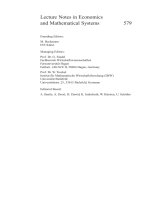
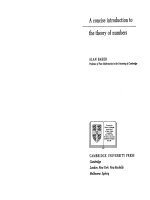
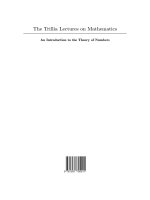
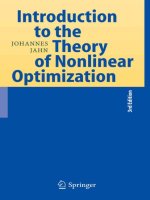
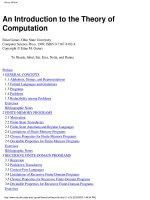
![an introduction to the theory of surreal numbers [electronic resource]](https://media.store123doc.com/images/document/14/y/pg/medium_pgk1401470100.jpg)
